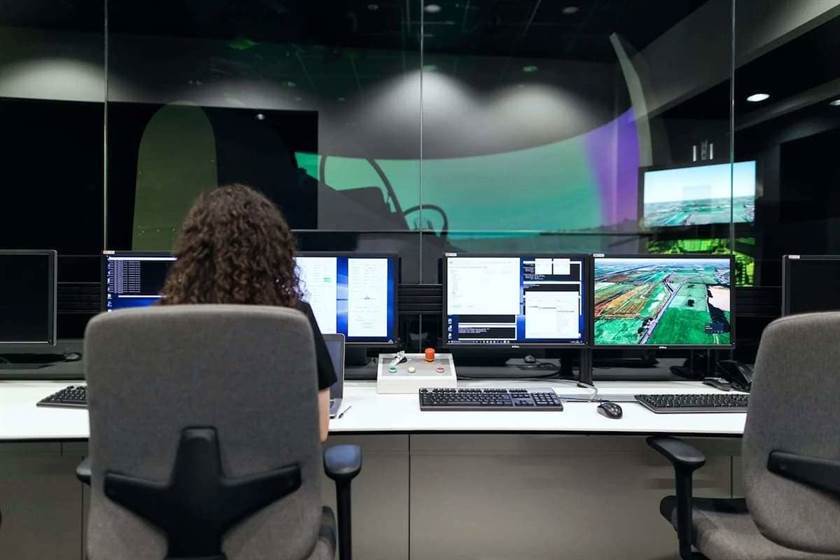Software development
AI-powered chatbots, designed ethically, can support high-quality university teaching
And it does so from multiple communication channels, day or night, freeing your team to build real relationships with the students who need it most. Chatbots can troubleshoot basic problems, guide users through software installations or configurations, reset passwords, provide network information, and offer self-help resources. IT teams can handle a large volume of easy-to-resolve tickets using an education chatbot and reserve their resources for complex issues that require human support. The chatbot can engage with prospective students, answer their inquiries, and collect relevant information.

However, a few participants pointed out that it was sufficient for them to learn with a human partner. The surveyed articles used different types of empirical evaluation to assess the effectiveness of chatbots in educational settings. In some instances, researchers combined multiple evaluation methods, possibly to strengthen the findings. Most importantly, chatbots played a critical role in the education field, in which most researchers (12 articles; 33.33%) developed chatbots used to teach computer science topics (Fig. 4). I do not see chatbots as a replacement for the teacher, but as one more tool in their toolbox, or a new medium that can be used to design learning experiences in a way that extends the capacity and unique abilities of the teacher.
Introducing EduBot: Our AI Chatbot for Education
When you think of advancements in technology, edtech might not be the first thing that pops into your head. But during the COVID-19 pandemic, edtech became a true lifeline for education by making it accessible and easy to use despite there being numerous physical restrictions. Today, technologies like conversational AI and natural language processing (NLP) continue to help educators and students world over teach and learn better. Believe it or not, the education sector is now among the top users of chatbots and other smart AI tools like ChatGPT.
- In the first one you can see that the chatbot is asking the person how they are feeling, and responding differently according to their answer.
- Secondly, chatbots can gather data on student interactions, feedback, and performance, which can be used to identify areas for improvement and optimize learning outcomes.
- Day to day, OU’s chatbot autonomously answers questions about admissions, enrollment and other topics.
- An embodied chatbot has a physical body, usually in the form of a human, or a cartoon animal (Serenko et al., 2007), allowing them to exhibit facial expressions and emotions.
- The inclusion and exclusion criteria allowed us to reduce the number of articles unrelated to our research questions.
In addition, the responses of the learner not only determine the chatbots’s responses, but provide data for the teacher to get to know the learner better. This allows the teacher to tweak the chatbot’s design to improve the experience. Equally if not more importantly, it can reveal gaps in knowledge or flawed assumptions the learners hold, which can inform the design of new learning experiences — chatbot-mediated or not. Chatbots can also assist students with disabilities by providing them with personalized learning experiences that cater to their unique needs. Chatbots can provide students with personalized learning experiences that are tailored to their individual needs. Educational chatbots are conversational bots with specialized training, which educational institutions and companies specifically use for the client and student interaction.
Table of Contents
They can also track project assignments and teachers with individually tailored messages and much more. Chatbots can engage students in interactive conversations and provide them with instant feedback. By incorporating gamification techniques, chatbots can also make learning more engaging and enjoyable.
Based on my initial explorations of the current capabilities and limitations of both types of chatbots, I opted for scripted chatbots. Of the many chatbot applications in education, this particular application is the best for promoting inclusivity. Chatbots can improve communication between students, faculty, and staff by providing a central point of contact. By automating administrative tasks, chatbots can also help reduce errors and ensure more accurate record-keeping. Our commitment to you doesn’t end with the delivery of your custom insurance chatbot. We offer various packages based on your needs to effectively support your business.
Trusted by Leading Institutions
Intelligent Tutoring Systems are defined as computerized learning environments that incorporate computational models (Graesser et al., 2001) and provide feedback based on learning progress. Educational technologies specifically focused on feedback for help-seekers, Chatbot for Education comparable to raising hands in the classroom, are Dialogue Systems and Pedagogical Conversational Agents (Lester et al., 1997). These technologies can simulate conversational partners and provide feedback through natural language (McLoughlin and Oliver, 1998).
Our AI chatbots for higher education are tailor-made for your company, offering a personalized experience for your customers. With a shift towards online education and EdTech platforms, course queries and fee structure is what many people look for. However, no one has enough time to convey all the related information, and here comes the role of a chatbot. Chatbots provide students with one-on-one tutoring, helping them understand difficult concepts and provide additional practice exercises. They can also track student progress and adjust their teaching methods to ensure that the student is making progress and achieving their learning goals.
1 RQ1: What fields are the educational chatbots used in?
When asked a question, the chatbot will respond based on its current knowledge database. If the conversation introduces a concept that it isn’t programmed to understand, the chatbot can state it doesn’t understand the question — or pass the communication to a human operator. Chatbots offer a viable, win-win solution to teaching and learning centres and to faculty. They are available 24/7, can respond to thousands of simultaneous requests and provide instant and robust service support when needed. Chatbots increase student engagement by providing personalized and immediate responses to their questions.
The chatbot’s intelligence is powered by natural language processing (NLP) technology, which enables it to understand and interpret student queries accurately. The chatbot’s responses are generated using machine learning algorithms, which learn from previous interactions with students to provide better responses over time. In this blog, we will explore the various types of education chatbots, their applications, and how they transform the education industry.
Student finances
Ensuing, the researcher also considered creative self-efficacy, defined as the students’ belief in producing creative outcomes (Brockhus et al., 2014). Prior research has not mentioned creativity as a learning outcome in EC studies. However, according to Pan et al. (2020), there is a positive relationship between creativity and the need for cognition as it also reflects individual innovation behavior. Likewise, it was deemed necessary due to the nature of the project, which involves design.

(Winkler and Soellner, 2018) and (Pérez-Marín, 2021), identified research gaps for supporting meta-cognitive skills with chatbots such as self-regulation. This requires a chatbot application that takes a mentoring role, as the development of these meta-cognitive skills can not be achieved solely by information delivery. Within our review we incorporate this by reviewing the mentoring role of chatbots as (Goal 3). Another key element for a mentoring chatbot is adaptation to the learners needs. Therefore, (Goal 4) of our review lies in the investigation of the adaptation approaches used by chatbots in education. For (Goal 5), we want to extend the work of (Winkler and Soellner, 2018) and (Pérez et al., 2020) regarding Application Clusters (AC) and map applications by further investigating specific learning domains in which chatbots have been studied.
Chatbot in Your Classroom
Lastly, teamwork perception was defined as students’ perception of how well they performed as a team to achieve their learning goals. According to Hadjielias et al. (2021), the cognitive state of teams involved in digital innovations is usually affected by the task involved within the innovation stages. These automated conversational agents (Riel, 2020) have been significantly used to replicate customer service interaction (Holotescu, 2016) in various domains (Khan et al., 2019; Wang et al., 2021) to an extent it has become a common trend (Wang et al., 2021). Six (16.66%) articles presented educational chatbots that exclusively operate on a mobile platform (e.g., phone, tablet).
